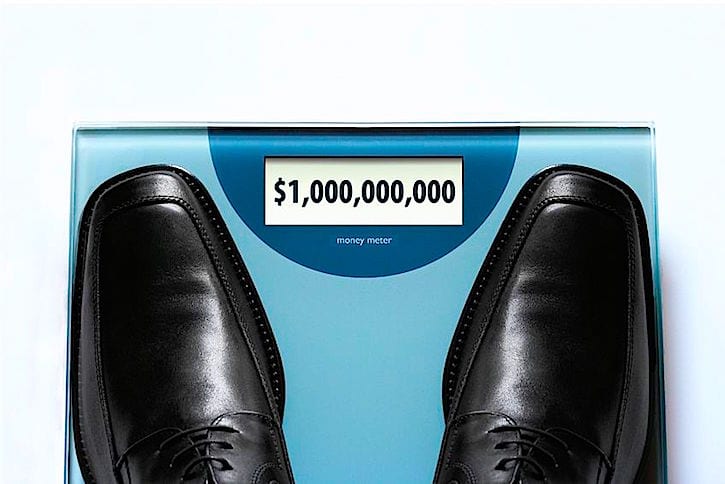How much is a chiropractic practice worth? This is one question that every chiropractor asks at least once during their chiropractic career. For some, the question gets posed at multiple times throughout the course of the life of their business. And for others, it’s a question that needs to be answered soon.
Despite the commonness of the question “How much is a chiropractic practice worth?” (or more specifically, “How much is MY chiropractic practice worth?), I am continually amazed by two aspects surrounding this important inquiry. The first is how few chiropractors know the answer to this question at any given point in their career (including when they are in the “home stretch” and within a few years of desired retirement age). The second point of puzzlement is the persistence of an oversimplified calculation of chiropractic practice value being based upon some percentage of gross collections.
For example, I recently spoke to a young doctor who was a few years out of chiropractic school who had looked at 37 different practices in an effort to find one to buy. When I asked why he saw such a large number of practices without actually purchasing any, his reason was that they were all “overpriced” according to the percentages he learned in school. Questioning him a little further, I decided to ask him the key question: “How much is a chiropractic practice worth?”
The prospective buyer produced a percentage range that I’ve heard a dozen times before. But unfortunately, he failed to produce any reason beyond his surface calculations. In other words, he simply looked at the asking price, the yearly collections average and did the math which led him, in every case, to walk away and look for another “bargain.”
For this buyer, the collections average caused him to potentially lose out on good practices that did not fit into his bad formula. The opposite is true as well. Sellers will improperly price their practice based on the same formula as miss out on their opportunity to sell.
Should Gross % of Collections Should Be Used At All?
I believe the young chiropractor was in error by using the gross percentage of collections as his single determining factor of a chiropractic practice’s value – but he’s not alone in making this mistake. There’s much more that needs to be evaluated before deciding that a practice is fairly priced or over priced.
That said, the gross percentage of collections is not an entirely useless figure. On a very, very broad scale it can show an average of what the typical chiropractic practice may sell for. But it is similar to stating that the US Average Income is $__. Certainly, there are people that make that average and many who are well above or well below it. Overall, it may tell you that our country has a higher average income than some other. But it doesn’t tell you much about how to determine your individual income.
In the same manner, a gross collections average can show you that chiropractic practices — in general – will sell in the range of a percentage of collections (a common figure used is 60-80%). If you compare our sales to that of the dentist profession, you will find that chiropractic practices typically sell for less than dental practices. If you compare our sales to that of other profession, you will find that chiropractic practices sell for more. But again, that doesn’t tell you much about YOUR practice.
Why Gross Collections % Can Be Massively Wrong in Valuing Your Practice
The real danger of using ballpark collections percentages to answer the question “How much is a chiropractic practice worth?” is this: it can lead you in two very different directions, very quickly – even using the same collections figure. Here’s what I mean:
Take two chiropractic practices that are both grossing $500,000 per year in collections. Practice A has extremely low profit margins due to the fact that it pays above the market rent, has a large staff, hefty equipment loans and, in general a fairly high overhead approaching 70%. Contrast that to Practice B (which also collects 500K per year) but is a lean mean profit producing machine with a 35% overhead.
Which practice has the higher value? According to the ballpark collections % formula, each would have the same value as they both collect the same. But clearly, the lower overhead, higher net practice, will be worth more. This is precisely why ballpark percentage of collections should be used to determine value, and subsequently the price. (And it’s exactly why our young chiropractic friend may be passing up some great deals if he continues to use this formula.)
So How Exactly How is Chiropractic Practice Value Determined?
By badmouthing the ballpark percentage of collections formula, I don’t mean to imply that valuing a chiropractic practice is an easy procedure simply requiring a better formula or measurement tool. It’s not like you can just step on a scale and determine your business value in the same manner you determine how much you weigh.
Instead, the underlying foundation of value begins with the earnings or profitability of your practice. Put simply: the higher the profitability, the higher the value.
That being said, it is important to recognize that there are many other factors that can directly influence and contribute to the final value of a chiropractic business, not all of them being financial. After all, the market value is simply what a willing buyer is willing to pay and those decisions are based on many things – some of which are tangible, logical and calculable and others of which are slightly less so.
Certainly practice profit is the most important component in establishing a value. Without enough cash flow to pay the bills, including the practice debt, and to provide the buyer with a reasonable salary (and provide a reasonable ROI on the initial investment), there is little or no value beyond the (possible) real estate, and equipment.
Practice growth is also important and affects value. Two practices with the same gross and net incomes will have different values if one is growing at 10% per year and the other is declining at 10% per year. Although you generally cannot capture “future potential in today‘s sale price, rest assured it has a huge influence on a buyer‘s desire to purchase and ultimately, the practice’s value.
Transferability to a new owner is important as it makes up a significant component of goodwill. Some other influencing factors are geographical location, facility appearance, competition (or saturation) of chiropractors, value of equipment, number of active patient files, remaining employees, and the owner‘s transition period following the sale.
All things considered, profits are vital in establishing a value, but it would be a mistake to ignore the above factors that are related to the total practice value.
Putting Numbers on What Your Chiropractic Practice is Worth
So, in consideration of the above, how exactly do you answer the question “How much is a chiropractic practice worth?” The valuation of a chiropractic practice is not a simple affair but it is an important one that too many chiropractors ignore.
In fact, when speaking to chiropractors who are two or three or more years away from retirement or a practice transition, DC’s will typically have no clue about the value of their practice. Their rationale is that they are going to wait on the cost of an appraisal until they are ready to transition.
While this is certainly one strategy that can save you time and money, it does not help you put numbers on what your practice is worth. And as a result, you continue down the road towards your retirement or transition with no real expectation of the value of a key asset in your retirement portfolio.
Obviously, the consequences can be severe. You overestimate and you end up working an extra year or two (or five) to make up for what you thought your practice is worth. If you underestimate, you could have been retired sooner.
Chiropractic Practice Valuations: The Happy Medium
Fortunately, there is a happy medium known as a Chiropractic Practice Valuation.
A Practice Valuation can be an excellent tool to help you estimate the value of your practice to determine its worth for your potential sale, future sale, financial planning, negotiations with an associate or prospective buyer as well as many other uses. In addition, the Chiropractic Practice Valuation can generally be done much faster and at much less expense than a formal appraisal because it is limited in scope compared to an appraisal. Unlike a residential or commercial building appraisal, we do not have to come on-site to “inspect” your practice but instead can place a value on your business using standard business valuation formulas that the banks use when lending money to buyers who are interested in purchasing your practice.
In this respect, the Valuation becomes an excellent “first step” in your planning to sell a chiropractic practice. Or — if you are on the other side of the fence — a chiropractic practice valuation can help you as the Buyer determine if the practice you are considering is a good deal and whether you should buy the chiropractic practice.
A chiropractic practice valuation allows you to effectively answer the question “How much is a chiropractic practice worth?” WITHOUT using error-prone, “gut check” guestimates or other equally inaccurate methods. And because of their cost savings compared to a formal appraisal, a practice valuation can be utilized much earlier while still providing you with some important details about the value of your business asset.
After all, no one is going to want to pay $5k for an Appraisal when they are 10 years away from transition. Or even if they are one year out, most DC’s don’t want to pay for multiple appraisals. A Valuation, on the other hand, can serve as a tool used earlier in practice and because of its affordability, can be performed multiple times to gauge practice value up to the transition period when the owner is ready to retire.
WHEN Should I Get a Chiropractic Practice Valuation?
There are several good times in your chiropractic career to consider a chiropractic practice valuation as a solid answer to the “How much is a chiropractic practice worth?” question:
- If you are ready to sell your practice within the next 3 years, then it makes great sense to determine what it is worth now (or soon).
- If you have an associate or potential buyer interested in purchasing your practice, then a chiropractic practice valuation will allow you to move forward meaningfully with that discussion. After all, everyone can seem interested – until they hear the price.
- If you need help with financial planning and your practice value is a significant piece of your retirement or financial portfolio, then it is logical that you will want to know what your business may contribute to your exit strategy.
- If you are thinking about changing pace or professions — get a valuation beforehand. Rather than slow down your practice (and potentially decrease the value) or just shut down your practice (and get nothing but a headache), a valuation will help you determine what your business is really worth – which may play a significant impact in you making a better decision.
For a deeper dive on the subject of how much a chiropractic practice is worth or how to maximize the value of your chiropractic practice sale or transition, consider attending one of our FREE WEBINARS on the topic (Click here to learn more)!









